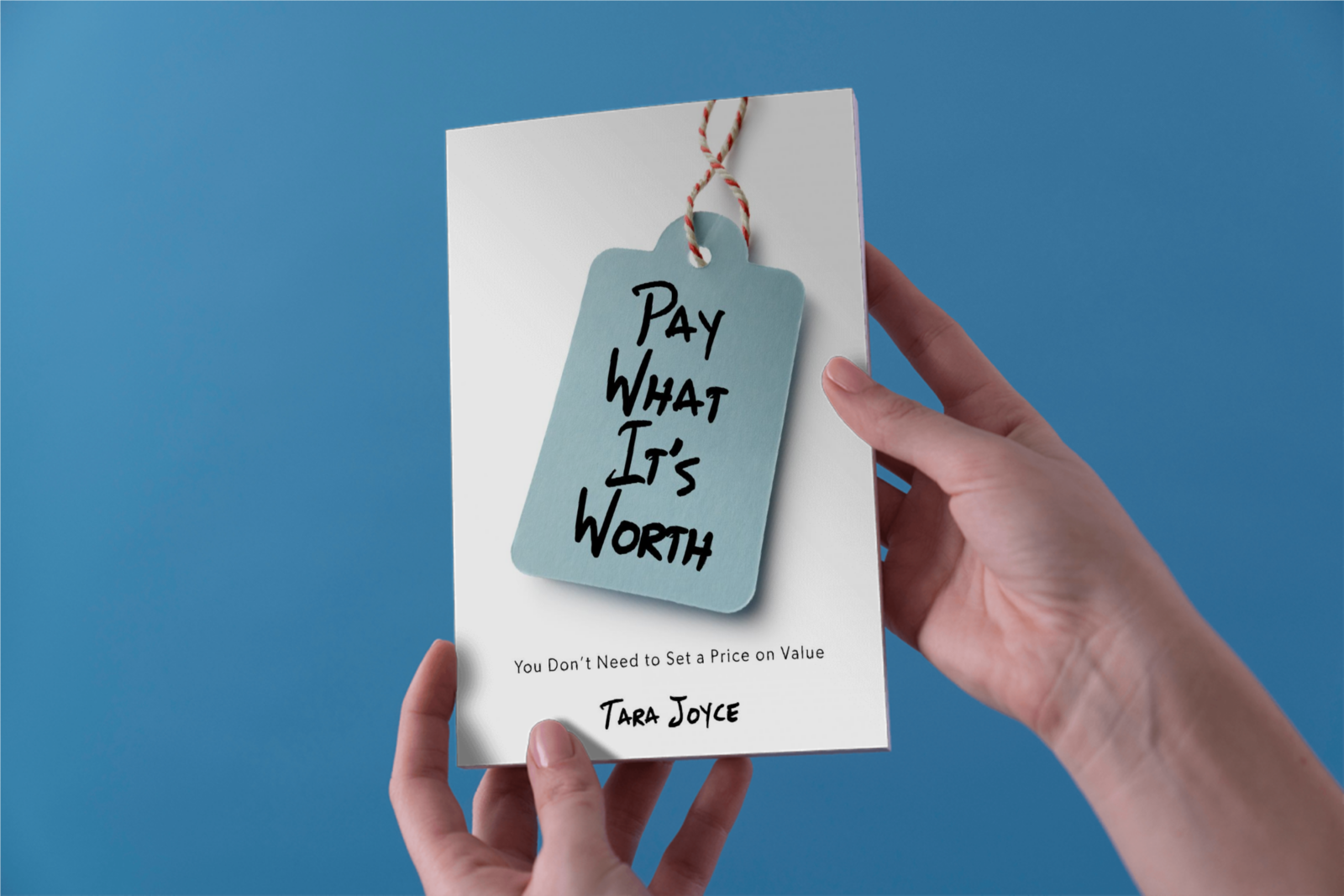
by Tara Joyce | May 20, 2011 | Self/Business Growth

In my last article I announced that Christine Dionese and I have entered into a peer-to-peer mentorship and, starting this month, will begin mentoring each other through a monthly Q&A column on her blog and mine.
Before we “get columing”, we are sharing our current and differing perspectives on mentorship as we enter into our alliance (to simplify ourselves — she’s a believer, I’m a skeptic). You can read Christine’s here. And here’s mine!
Mentors are:
not a topic, or role, that feel very familiar with. For a long time I felt that the best thing was to do everything myself and to rely on no one. But I’m growing to see the value of mentors now, as I grow to see the value of external support, accept my need for it, and I allow myself to mourn the support I didn’t get.
Mentors can be:
life changers and inspirers. They help you to see your self and your value clearly. They provide you with things you didn’t know that you needed and help you to see, feel and think in new ways.
My advice on picking a mentor is:
pay attention to who inspires you, and supports you. Pay attention to the people who encourage you to expand your mind.
What makes the relationship viable?
trust and respect.
My mentors are:
my husband, my best friend and my coach. Each of them has helped me to embrace who I am and inspired me to live to my fullest.
I’ll never forget:
how wonderful it feels to be seen and supported by someone you respect and trust.
Read Christine’s unique perspective on mentoring here.

by Tara Joyce | May 5, 2011 | My Journey | What's On My Mind

with Christine Dionese and Me!
After much discussion and a bit of ass dragging by me, Christine and I have decided to explore the topic of peer-to-peer mentoring together. Beginning this month, we will begin mentoring each other through a monthly Q&A column on her blog and mine, where we will publicly share our challenges and pains, and support each other in working through those issues.
Christine and I have never met in person. Nor have we ever communicated outside of email. Our relationship and the trust we have built has developed strictly through the written word. As Christine pointed out in an email, “People wrote to one another in the old days and had to learn about one another in that way. Travel was either scarce or financially prohibitive, so writing letters was the mode.” Perhaps one day we will meet but for now we believe the power of the written word will be enough to facilitate a strong and effective mentor relationship.
Christine and I share a love of writing and a belief in a holistic and integrated approach to all aspects of living.
Why are we exploring mentorship?
Four reasons:
- We believe we can learn and grow from each other.
- We believe as professionals we need to self-discover and self-improve in order to meaningfully provide value to our clients.
- We believe you can learn from our mentor relationship. Our goal for the monthly Q&A column is to promote peer-to-peer mentorship, show different perspectives on mentorship and hopefully convert mentorship non-believers (like me! For more on this see point #4) into believers. Overall we believe sharing our mentor relationship with you will help you to learn more about yourself, and assist you in moving your businesses forward in a socially conscious way.
- We thought it would be a cool contrast to present mentorship from two differing perspectives. Being the X-Files geek I am, I will use the analogy that I am Scully, the skeptic, and Christine is Mulder, the believer. Christine’s perspective on mentors is so strong, she is confident in their value, has experience relying on them and is passionate about facilitating and championing the importance of this type of relationship. Me, on the other hand, is just beginning to enter the world of trusting another to support and champion me, and I am not very familiar with this feeling, or with understanding the immense value a mentor can add to my life.
What’s Up Next…
- In two weeks, Christine and I will shed light onto our differing perspectives on mentorship as we begin this new relationship and project.
- Monthly, we will publish a Q&A on each of our blogs where we will mentor and support each other on our topic du jour.
Does Christine seem familiar to you? She was December 2010’s Innerpreneur Spotlight which you can check out here!

by Tara Joyce | May 3, 2011 | Featured, Pay What It's Worth Pricing
As a practitioner of Pay What It’s Worth pricing, I see the business approach of asking a client to pay-what-they-can as a very different thing. Each approach communicates very different things about your brand, and the exchange you seek. Care to explore this with me deeper?
Exploring Pay What You Can Pricing and What It Communicates
As a business owner, communicating that others are free to pay-what-they-can for your work positions you as willing to sell your work in charity. (You may want to consider at this point whether your business, or your clients, is, in fact, a charity.) In many cases neither party is a charity, so what you are truly communicating is that it’s okay for a client to pay whatever they *think* they can, and that you are open and lenient to allowing others to value your work at less than it’s worth, so long as the person deems they need it.
Now this is only my opinion, but I feel if you are responsible enough to identify a need and seek a solution for it, than you are also responsible enough to find the means for fulfilling that need — i.e., if you want it, you need to find a way to get it. I see no long-term value in not holding people (and businesses) responsible for fairly paying for a professionals energy and time. If you can determine that you want the service, and you go out and seek it, then you need to have a plan for how you are going to obtain it fairly.
By stating that your clients need only to pay-what-they-can, you are first, and foremost, communicating that you see them as lacking (you can’t afford what I think this is worth so I’ll let you pay me what you can), and encouraging them to act in this scarcity mindset. Secondly, you are encouraging them not to consider the long-term value of what they are receiving but instead to focus on what they *think* they can afford in the moment.
An initial question I would ask about this approach is: What leads you think that your potential clients have a scarcity of money and need to pay only what they can? Secondly: Of what benefit is it to encourage scarcity thinking around money? Do you see money as scarce? How do you think this scarcity message might affect the mindset of your buyers when they pay you? Unknowingly, you are positioning your work to be undervalued and attracting clients who are looking for a deal, rather than attracting clients who seek a fair value exchange.
With Pay What You Can (PWYC) pricing, the value exchange is focused on “what I can get”, where you are letting the customer receive what they need and pay what they feel they can afford, despite what the work may be worth. Communicating this message may be doing both your business and your potential clients a disservice, unless your undertaking an act of charity.
Exploring Pay What It’s Worth and What It Communicates
As a business owner, positioning your business offerings as Pay What It’s Worth (PWIW), you are communicating that you are willing to sell your work at it’s perceived value, as determined by the client. With this position, you are challenging your client to think deeply and honestly about the value you bring to their business and to pay you accordingly. You are not communicating to your potential client that they cannot afford your services. If anything, you are communicating that you trust the client, and the excellence of your work, enough to let them determine its value. Pay What It’s Worth pricing makes no judgments about the financial abilities of the parties involved. With this strategy, you are essentially challenging potential clients to look at the value exchange occurring, and to focus not on what they can get, but what they can give in gratitude for what they have received. You are also asking them to consider the standard prices for things, and question whether those market prices accurately reflect the true value of what they are receiving from you.
You are not judging what others can and can not afford, you are simply stating that if you agree to work with someone and they employ your services, you trust that they will pay you fairly for what you provide to them. You are supporting both your Self and your clients in truly and honestly identifying and determining a value for what each party contributes to the exchange, monetary and otherwise.
PWIW is Not PWYC
There are distinct differences in what each pricing system communicates — about your business and work and about the people who can best benefit from it. What message do you want to send?

by Tara Joyce | May 2, 2011 | Cultural Creativity

I am in a state of questioning, open and receptive.
I seek to gain understanding of my Self and others.
I allow for surprises and discoveries about what I don’t know.
I step away from my beliefs enough to allow for new ways of seeing things.
I believe in what I don’t yet understand.
photo credit: travelinlibrarian







